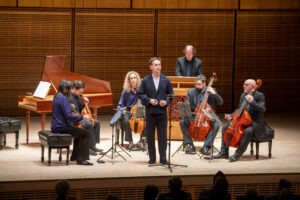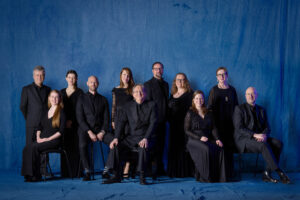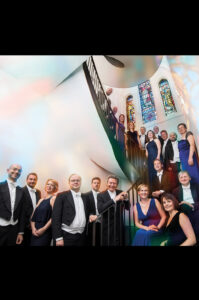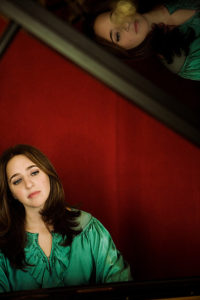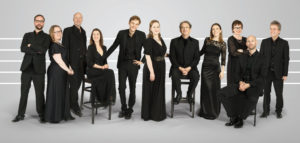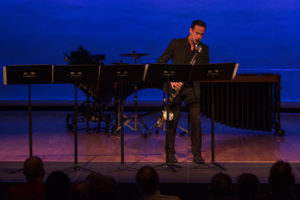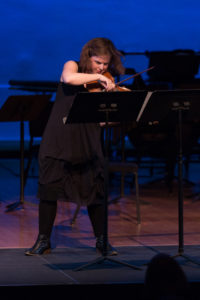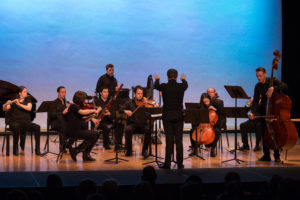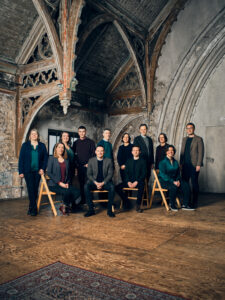
Stile Antico Sings Palestrina at St. Mary’s
March 29, 2025
Church of St. Mary the Virgin
NEW YORK – Celebrating their twentieth year, the vocal ensemble Stile Antico brought a program dedicated to the 500th anniversary of the composer Giovanni Pierluigi da Palestrina’s birth to Miller Theatre’s Early Music Series. The concert was held at the Church of St. Mary the Virgin in midtown, a space that Miller has employed to host a number of Renaissance music performances.
Stile Antico appeared with only eleven singers, instead of their usual complement of a dozen. Baritone Gareth Thomas was ill and couldn’t perform. Between numbers, several of the singers hid surreptitious coughs, leading one to think that a bug had plagued the group en route. The quality of the performance didn’t suffer: they still sang sublimely.
The centerpiece of Stile Antico’s latest recording, The Golden Era: Palestrina (Decca, 2025), is perhaps his most famous piece, Missa Papae Marcelli. A great deal of lore has grown up around it, with a story that Palestrina wrote it in part to convince the more conservative members of the Council of Trent that they needn’t ban polyphony and revert exclusively to plainchant in services. Composers could write in multiple parts and still clearly convey the text. While it is unlikely that the Pope Marcellus Mass served as a test piece, Palestrina took pains to write polyphony that never obscured the words. Many composers, some even generations later, imitated what had come to be called the stile antico style of declamation and use of dissonance.
Stile Antico’s performance of Missa Papae Marcelli on the recording is impressive, a standout that is among the best in a crowded field. Their diction is crystal clear, and the tone and blend of the ensemble is particularly beautiful. At St. Mary’s, the mass’s Credo was featured, and it was an expansive display that was well-paced to express the drama inherent in various passages of the piece.
A number of motets by the composer were also included on the program. Tu es Petrus and Exsultate Deo displayed fleet runs and ricocheting exchanges. Sicut servus was performed with fetching delicacy, and Nigra sum sed formosa was imbued with stately elegance.

Composers besides Palestrina who also served in Rome were on the program as well. Josquin’s Salve regina, with a stark bass motive and a texture frequently divided into duets, represented one of the most prominent elder statesmen of the early Renaissance. Jacques Arcadelt’s Pater noster is an example of the florid writing and frequent use of extra-liturgical texts and tunes that contributed to the aforementioned controversy at the Council of Trent. It is hard to lay blame at Arcadelt’s doorstep when hearing his music, which is pleasing in its bustling rhythms and multihued chords. Tomás Luis de Victoria’s Trahe me post te and Orlando de Lassus’s Musica dei donum represented works by esteemed contemporaries. The former has an austere yet attractive manner and the latter, a six-voice motet, is more intricate in presentation. Christus resurgens was by Gregorio Allegri, a composer of the next generation, who continued in Palestrina’s footsteps, composing music in stile antico style. The piece’s use of antiphony is particularly striking. Another later composer, Felice Anerio, who succeeded Palestrina in the Papal Choir, combined passages of relatively homophonic declamation with expressive chromaticism in his Christus factus est.
The program also included a new work, A Gift of Heaven by the English composer Cheryl Frances Hoad, who used the preface to a publication by Palestrina, in which he flattered the dedicatee, as the text for her piece. Sumptuous polychords undergirded a solo tenor imparting what Frances Hoad describes as “buttering up a patron.”
Sadly, Stile Antico at eleven could not finish the program with the impressive 12-voice motet Laudate Dominum a 12. They substituted another Palestrina work, Surge Propera Amica Mea, with corruscating runs and an impressive final cadential section, creating an exuberant finale. The group returned to offer something completely different for an encore, “The Silver Swan,” a madrigal by the English composer Orlando Gibbons. It provided a delicately lyrical close to an evening of exquisitely well-performed music.
-Christian Carey
